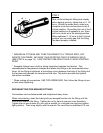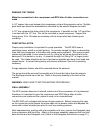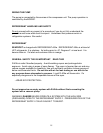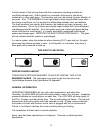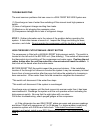21
Disconnecting the gauge set on a static system may be done by rapidly unscrewing
the hoses from the service ports.
Adding charge to a working system should be done through the suction side (blue)
as liquid. The suction pressure must be monitored and not allowed to rise more then 15
PSIG above operating pressure.
VENTING THE CHARGE HOSE
WHEN ATTACHING GAUGES TO A CHARGED SYSTEM
Note: This procedure will vary with the type of gauges being used. Be sure to vent the
charge hose to the gauge set before opening the valve to add refrigerant.
LIQUID CHARGING
REFRIGERANT IS EITHER a vapor or liquid. R-404a is a blend that may separate if
vapor charged. To supply LIQUID to a system, keep the refrigerant canister in the
inverted position (valve down). If properly handled the refrigerant will flash to vapor
when charging.
COMMISSIONING PROCEDURE
EVACUATION WITH A VACUUM PUMP
Evacuation removes air, readying the system for charging.
Connect a gauge set to the service ports. (See "Access Port Location” page 33)
Connect the gauge center hose to a high vacuum pump. Start the pump and slowly
open the low side/suction gauge hand wheel. As the vacuum drops below 20 inches
open both hand wheels fully.
EVACUATION LEAK TEST
Evacuate the system to the best vacuum (lowest pressure). As the gauge reaches this
low pressure close the valves on the manifold. Observe the vacuum gauge and be sure
the pressure remains constant for 5 minutes. If the pressure rises rapidly check all the
connections again. Re evacuate to the lowest pressure and test by holding a vacuum
with the gauges closed. Be sure the system will hold this vacuum. Proceed by opening
the valves and continuing the evacuation process for 30 minutes or more. A micron
gauge can be used to measure the vacuum. Proper dehydration and evacuation should
be in the range of 200 to 500 microns.



